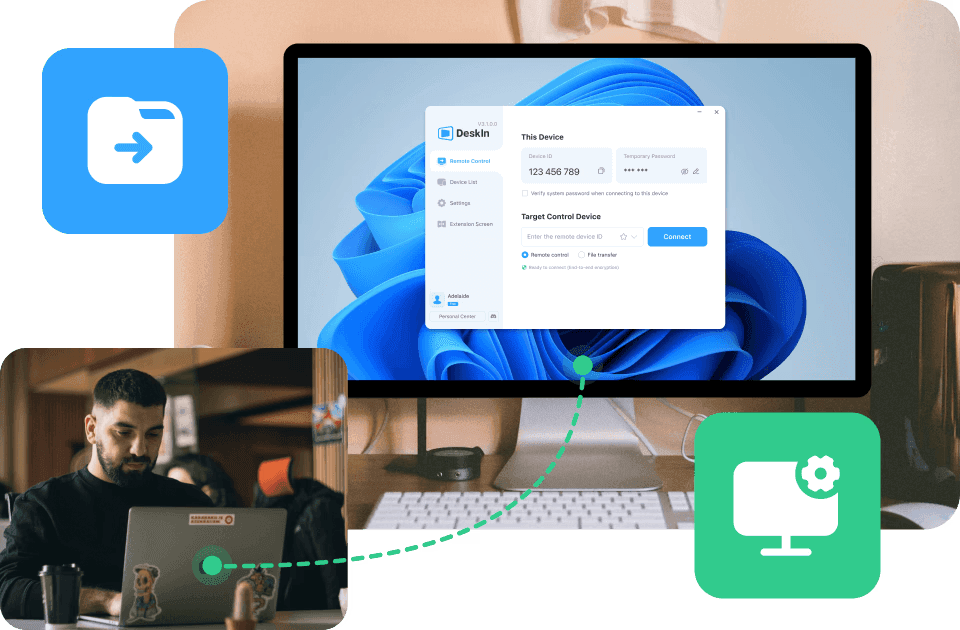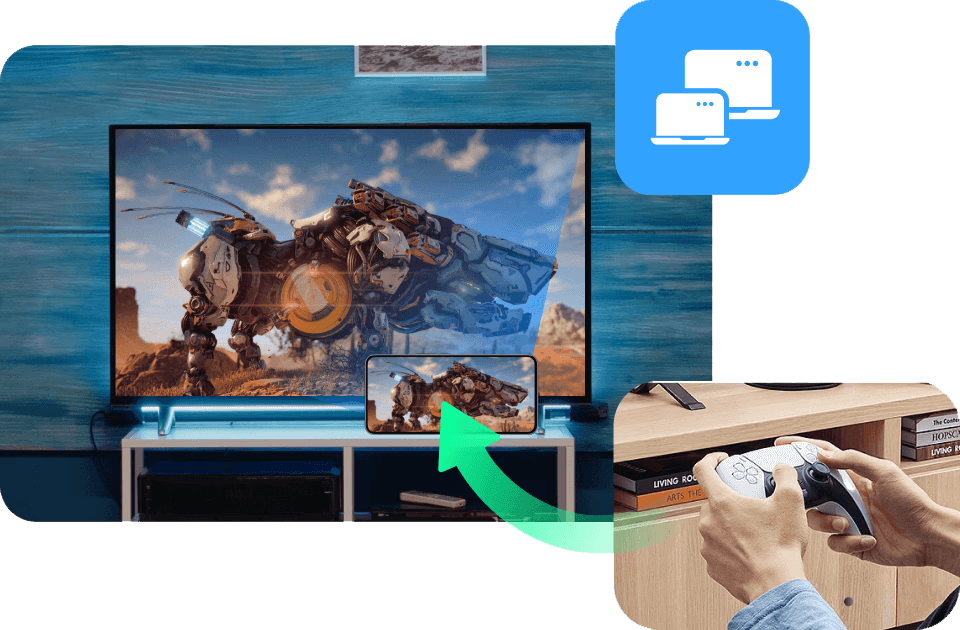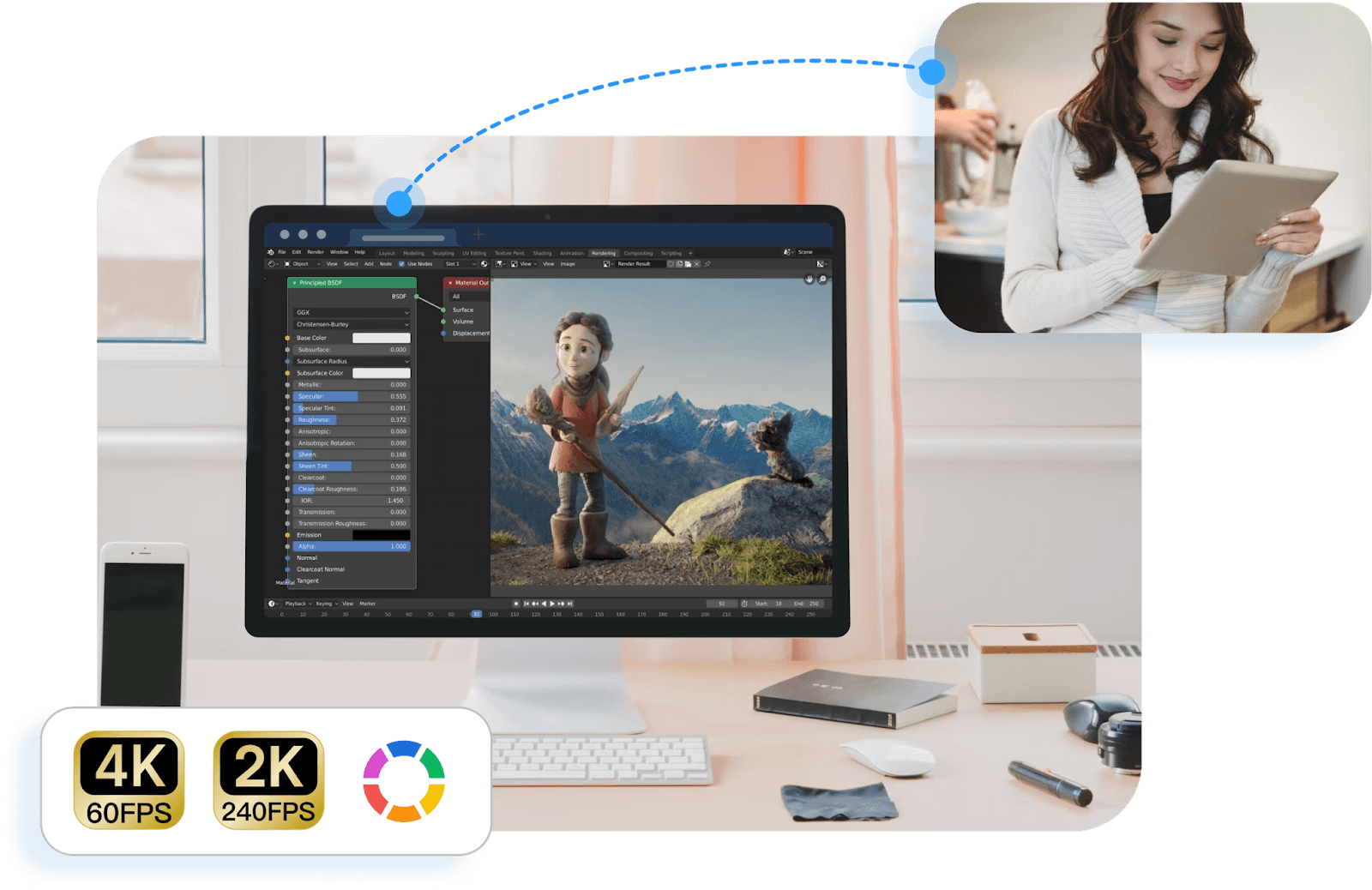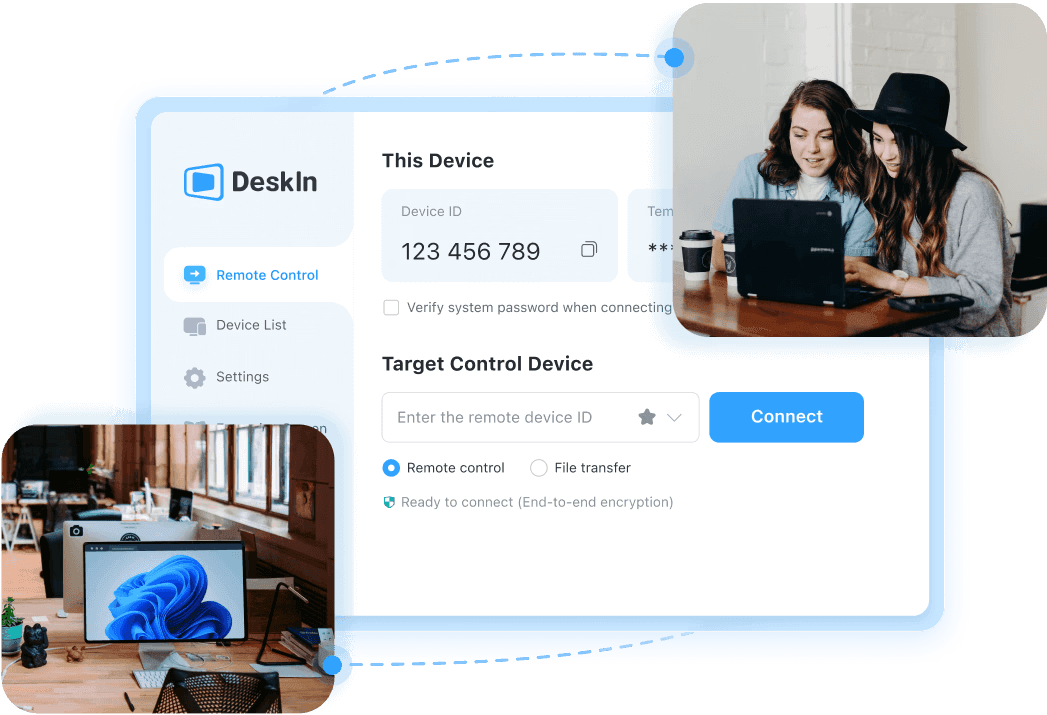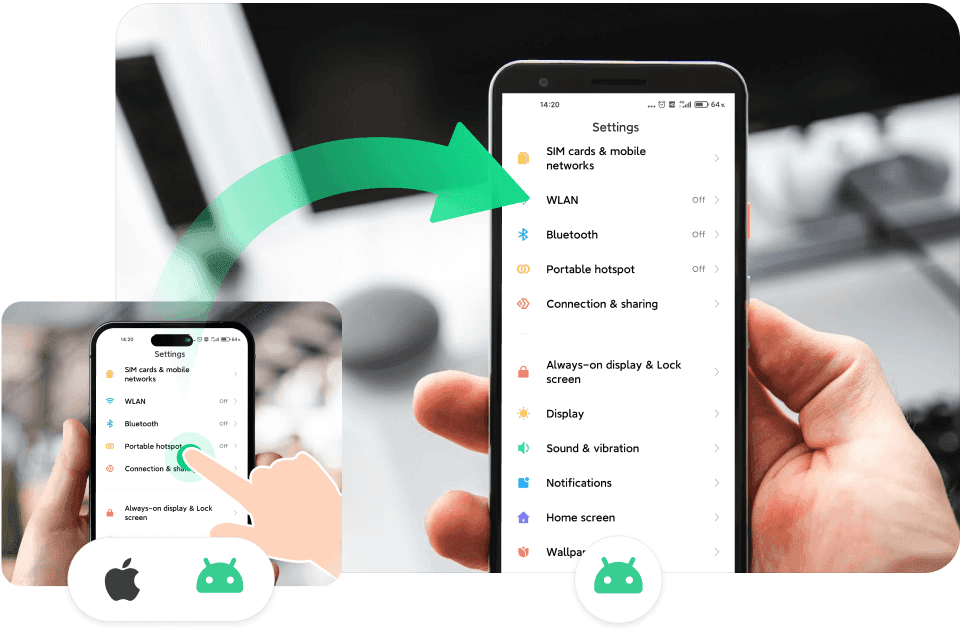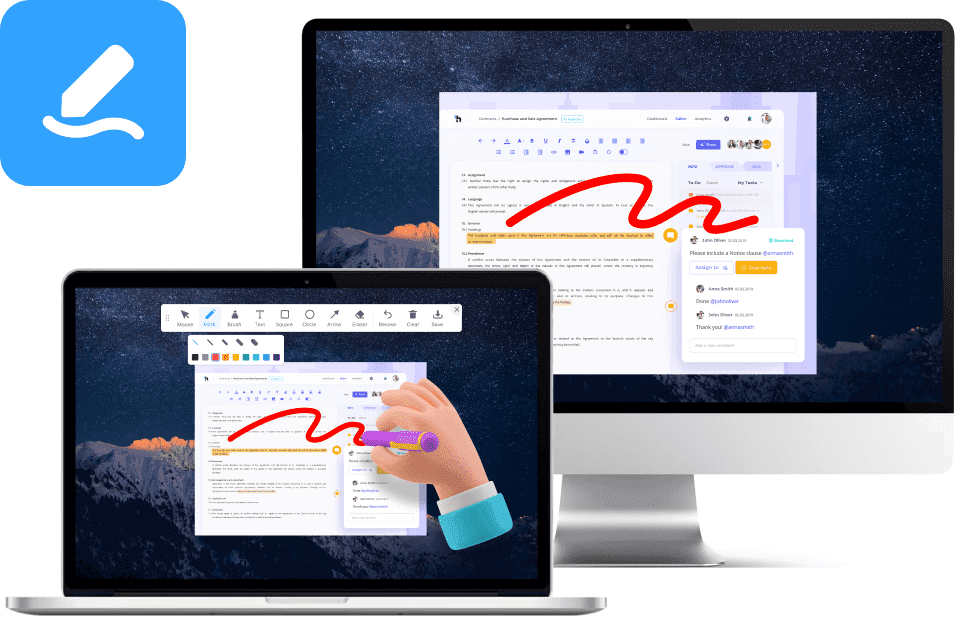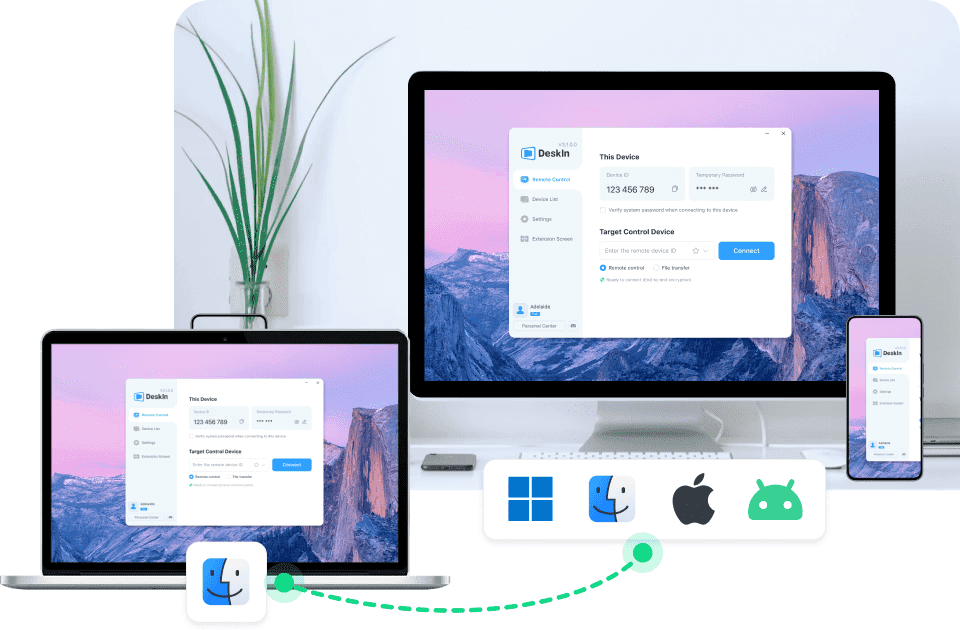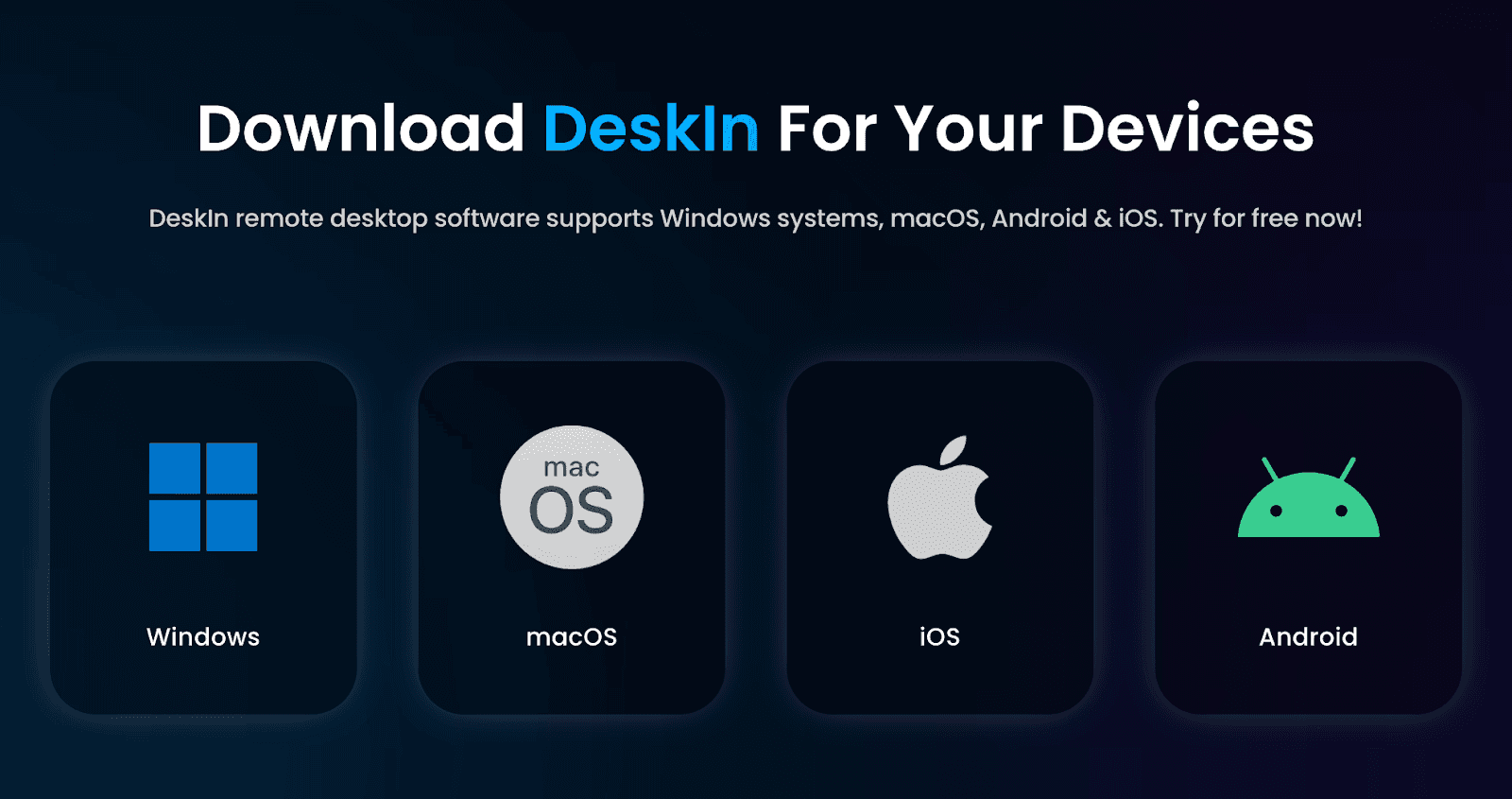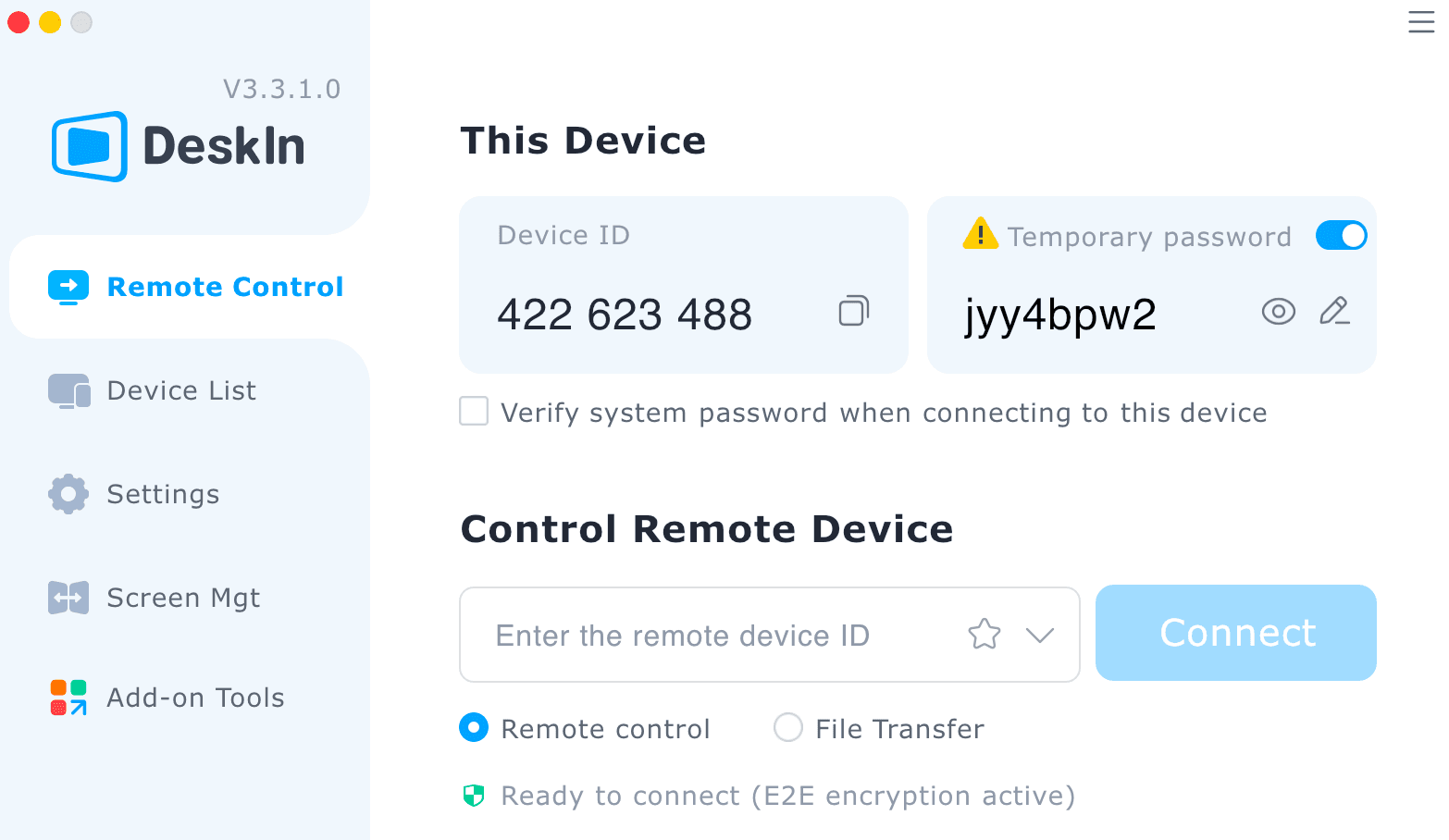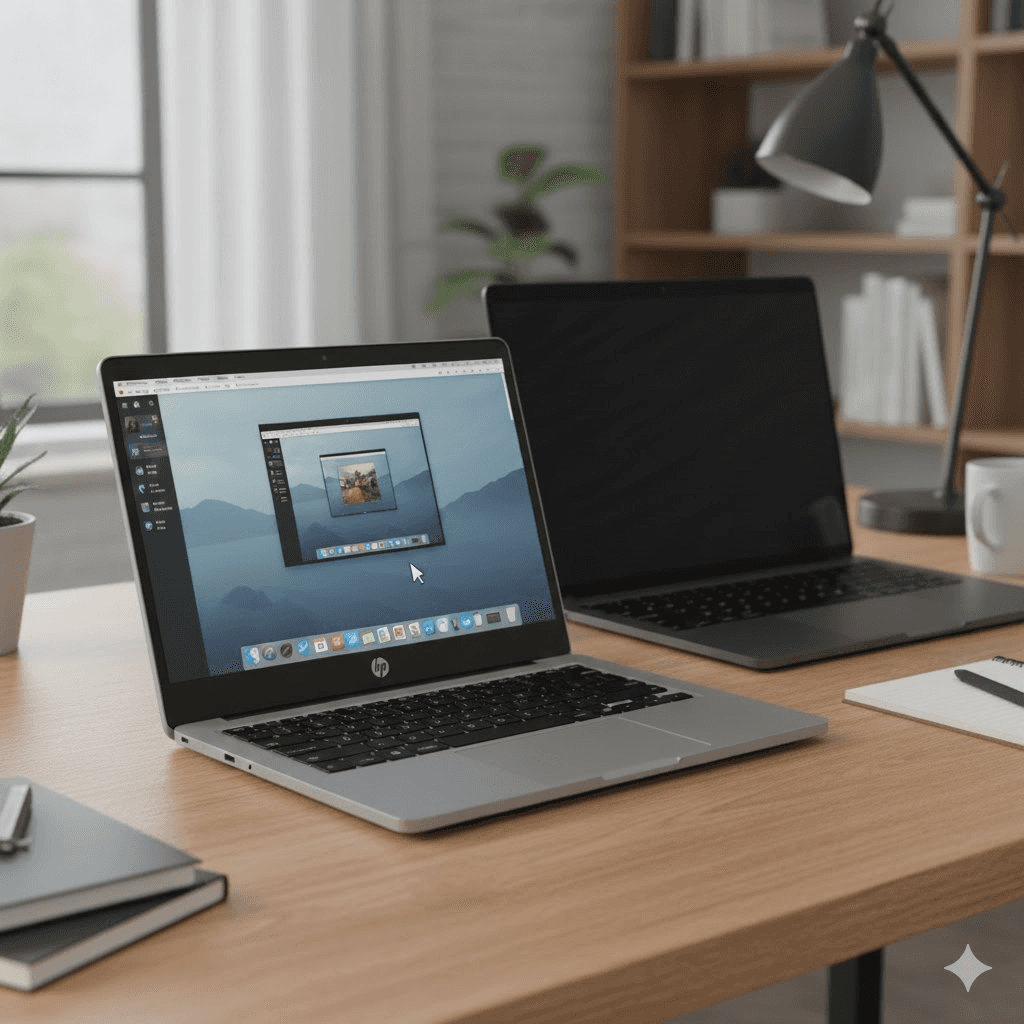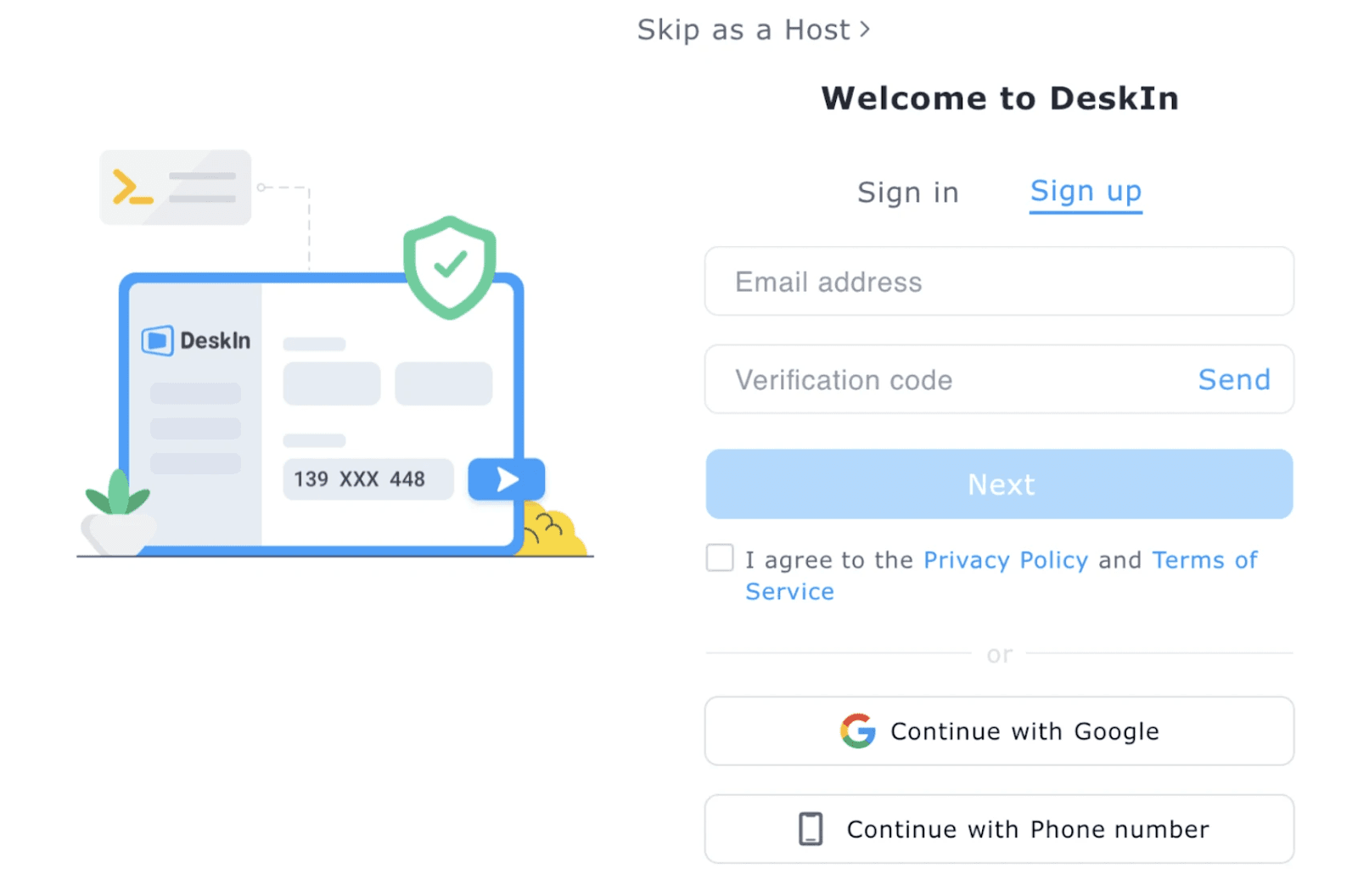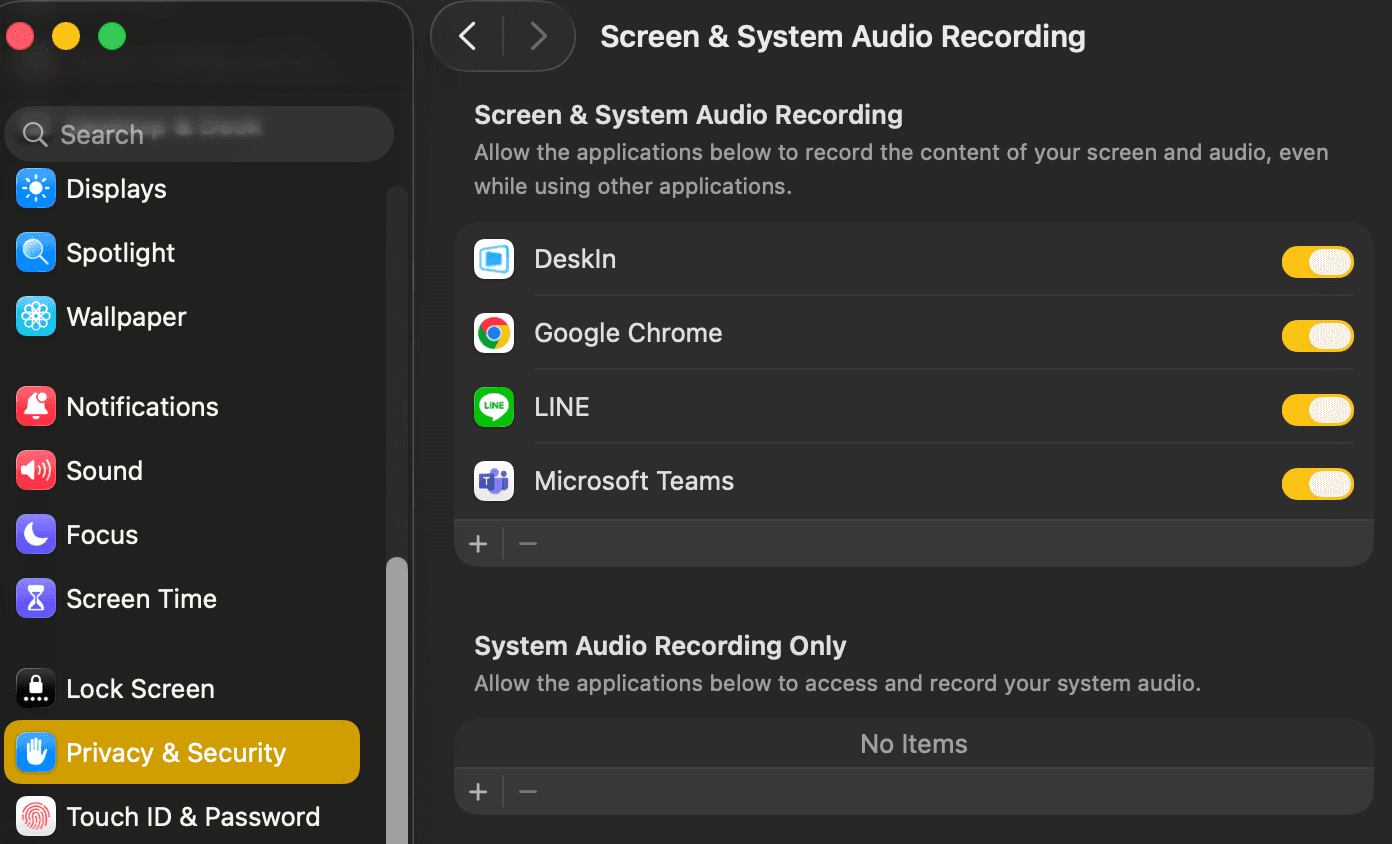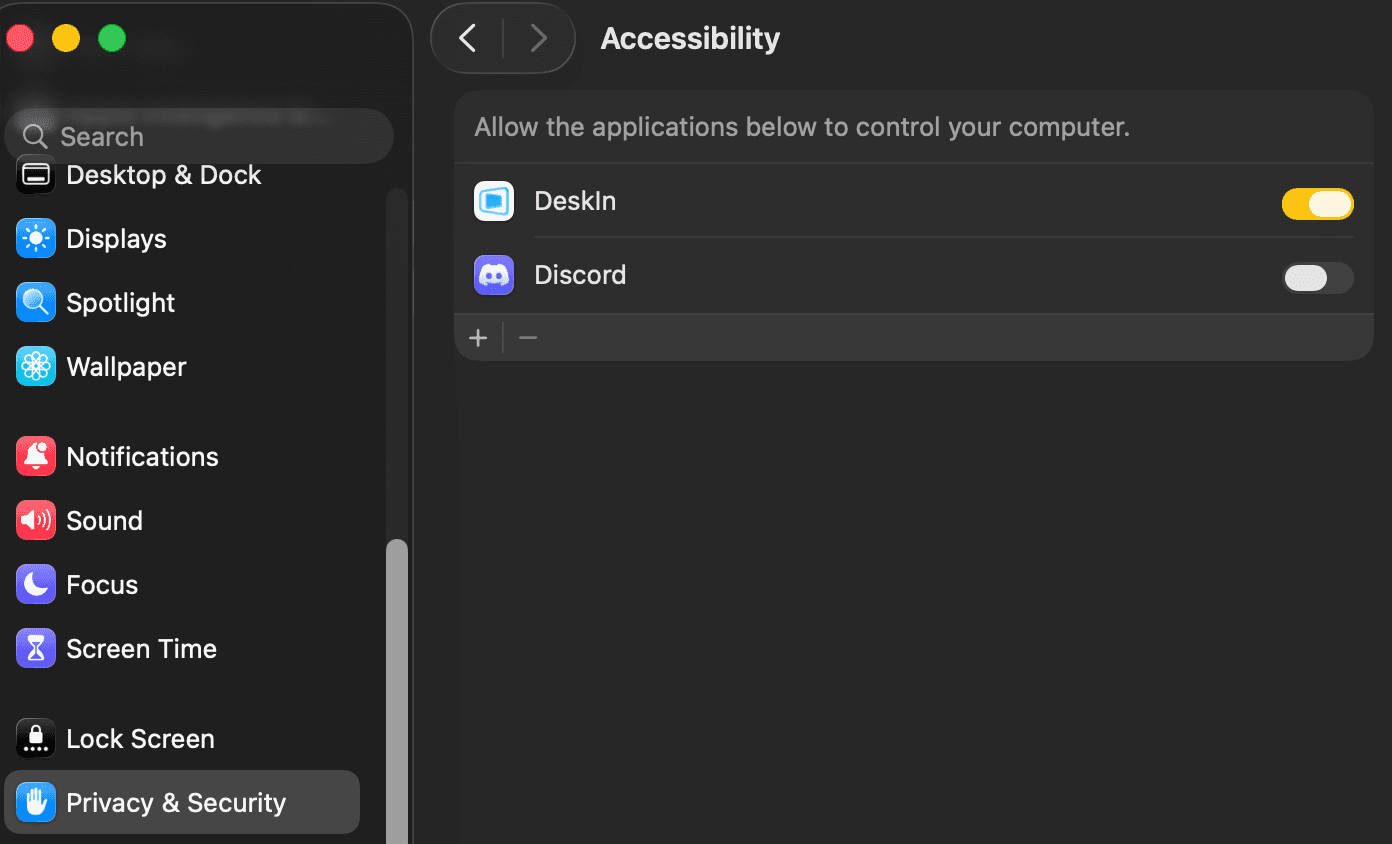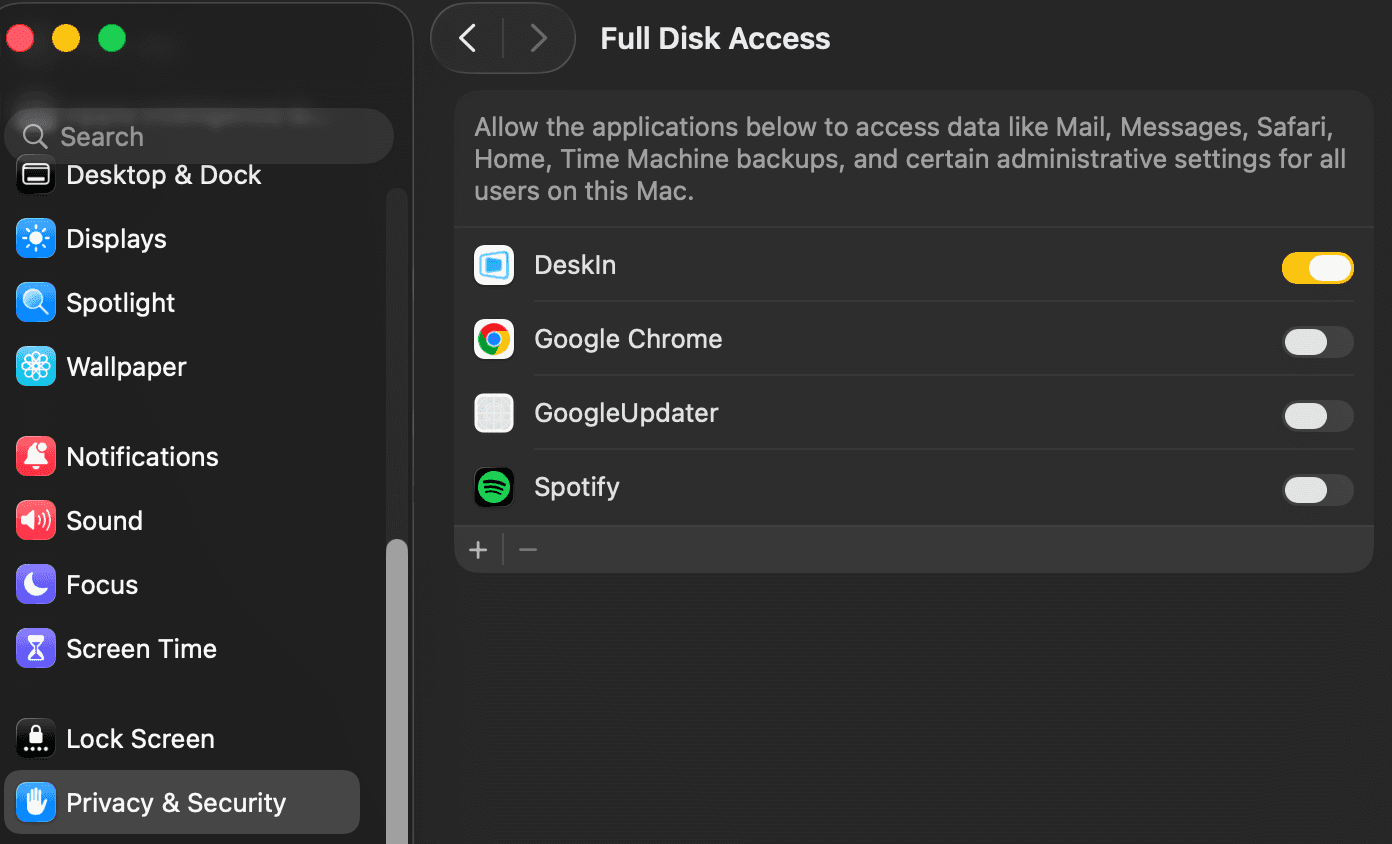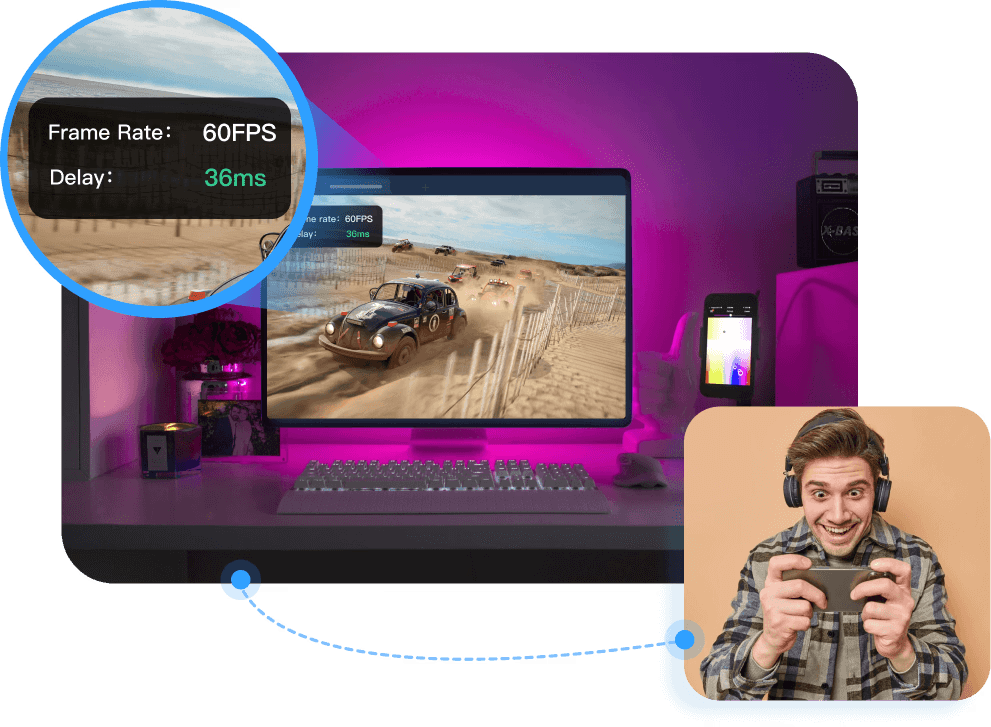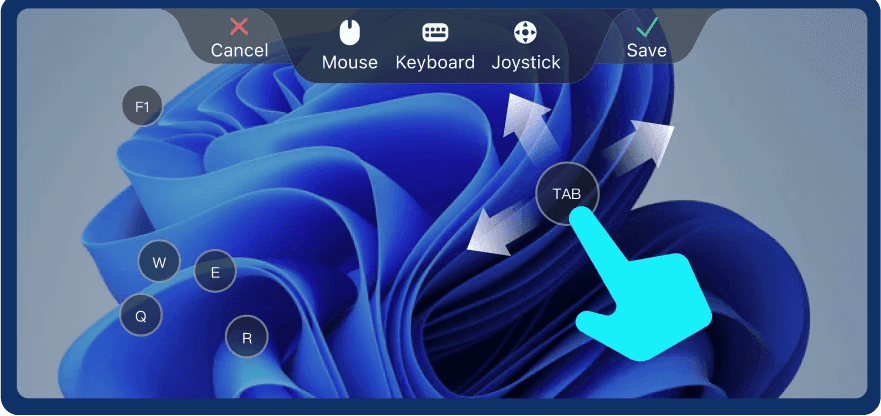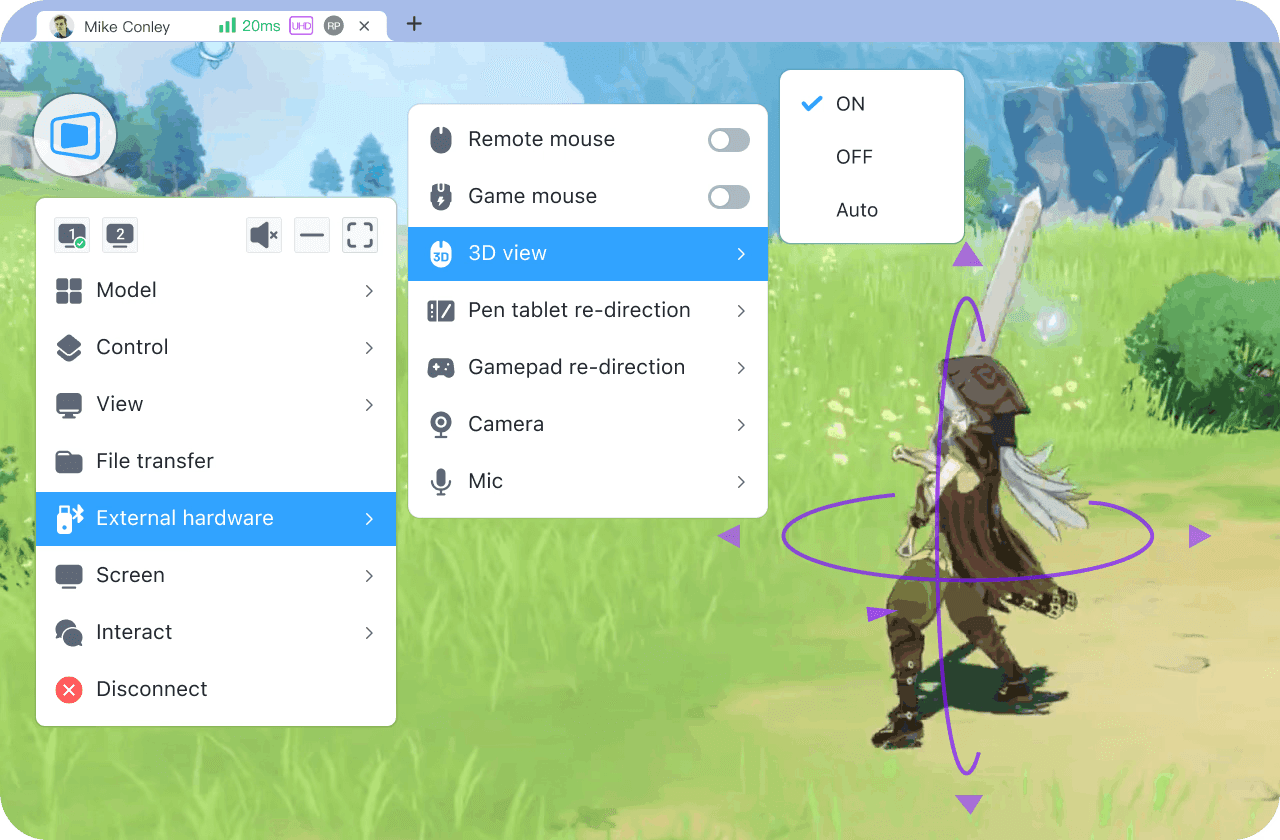You're mid-battle in Clair Obscur: Expedition 33, pulling off a combo that merits applause, and just as you want to screenshare it, your screen becomes a pixelated disaster, your voice lags by two seconds, and your friends feel you're in 2010. Frustrating? Totally.
Luckily, technology for screen sharing has advanced greatly. You can stream your gameplay in stunning Full HD (even 4K) with the right tools, with screen sharing so smooth and local-feeling, and with low latency. Whether you're showing off, co-opping, or coaching, this guide will help you do it like a pro.
What is Screenshare & Why It Matters for Gaming
In simple terms, screenshare allows you to broadcast your screen to others in real-time. Though for gamers, replicating the experience matters no less than “sharing”. Whether you show off a hard-earned kill streak or you walk a newbie through the Elden Ring, the goal involves smooth, high-fidelity playback with zero distractions.
Popular Use Cases:
Live co-op play: Let your buddy take over at some point during live co-op play or help to guide them from some remote location.
Game coaching: Teach or learn new skills via one-on-one feedback.
Multiplayer syncing: Sync together for couch gaming, which happens even when you're very far away.
Streaming setup: Use screen streamer tools to push gameplay directly to Twitch or YouTube.
However, a clear resolution is vital for success. Also, ultra-low latency is something that is needed.
Why Latency and Resolution Matter
When it comes to screen sharing your gameplay, two things separate an epic stream from an unwatchable mess: resolution and latency.
Let’s start with the resolution. High resolution allows viewers to see exactly what you see: every detail of your custom UI, every environment texture, and every flick shot that lands with pixel-perfect precision. Clarity matters when you present a build, stream a match, or flex mods. Blurry, low-res streams can make even the best plays look mediocre.
Then there’s latency — the silent killer of real-time interaction. Low-latency screen sharing is the difference between someone reacting with you and someone reacting after you. It’s what makes your gameplay feel live, not laggy.
Imagine that you are going to try to dodge a rocket launcher weapon in Apex Legends with just a two-second delay; by the time your stream actually catches up, you are already out of the entire game. Not ideal.
The right screen sharing setup isn’t only about showing your screen. It’s about delivering the experience as it happens, with zero lag, along with high fidelity.
Common Screenshare Challenges for Gamers
Even with solid hardware, screen sharing sometimes feels like someone is battling their setup. Gamers have probably run across a few pain points like these:
Input Delay: You click and nothing happens, then everything happens all at once. Both your timing and your fun suffer because of input lag.
Pixelated Visuals: You’re rocking an RTX 4090, but your screenshare seems like you play Minecraft on a very old phone. It is just not the flex that you wanted.
Audio Desync: Gunfire sounds after you've already respawned? Classic. The whole experience feels off when the audio and visuals don’t match up together.
Frame Rate Drops: At the beginning was a smooth 60 FPS. Then, it is just a jittery mess. Fluid motion has just gone.
Why Do These Things Happen?
Bandwidth Bottlenecks: Limited upload speeds cannot maintain high-quality streaming, especially over Wi-Fi.
Encoding Lag: Lightweight or poorly optimized apps struggle to compress video in real time.
Network Hops: The farther the signal travels (and the more servers it passes through), the higher the latency, especially without global server optimization.
Best Screen Sharing Tools for Gamers (2025 Update)
1. DeskIn

Best for: Gamers who want ultra-smooth 4K streaming, low latency, and full controller support across devices
DeskIn, created for the gaming community, is unlike a typical remote desktop application. It ensures that your gameplay responds instantly and looks sharp, with latency under 40ms and support for Full HD or even 4K resolution. Whether you're coaching a friend in Valorant or streaming from your gaming PC to a low-spec tablet, DeskIn delivers.
What makes DeskIn one of the best screen sharing options for gamers is that it provides robust support for controller input. Users are able to connect gamepads to a local device with inputs registered as if the controller plugs into the host PC. This ensures a lag-free native gameplay experience overall.
DeskIn also comes with gamer-friendly features, like Auto 3D Game View, which automatically adjusts for first- or third-person perspective games, so everything looks just right without you lifting a finger.
2. Parsec
Best for: Co-op gaming and remote party play
Parsec is a favorite among gamers wanting that local multiplayer feeling without being in the same room. It offers fluid 4K streams and uses peer-to-peer connections to keep latency low and gameplay tight.
Parsec works great when you nail jumps in a platformer or battle through a chaotic party game. It supports multiple controllers, so you can play without much hassle because the setup is super easy. It is just a reliable as well as fun go-to option for more laid-back co-op nights and quick game sessions with your friends, even if it might not offer all the advanced features of DeskIn.
3. Steam Remote Play Together

Best for: Steam users looking for simple co-op play
Steam Remote Play Together solves the problem of playing local multiplayer games online with friends within Steam — the setup is not at all complicated. Only the host needs to own and install the game. For other players, there is no purchase or installation needed; everyone else is able to hop in and then play together. That means that you are able to turn couch co-op, split-screen, or shared-screen games into online multiplayer in a matter of seconds.
Also, your friends are able to join from any location since it functions on many systems: Windows, macOS, Linux, iOS, Android, and Steam Deck. People can take individual controllers or use shared devices. The keyboard as well as the mouse of the host can be shared when it is needed.
4. Discord

Best for: Quick gameplay sharing in chats or groups
Discord is the hangout spot that most gamers prefer, plus its screen share works perfectly for fast and informal sharing. You can share your screen directly during private calls or channels if you want to show off a build, stream gameplay, or walk a friend through a tricky level, and best of all, no extra setup is needed.
Streams can run in 720p as a default. Nitro users can get upgrades up to 1080p or 4K at 60FPS. It is optimal for real-time demos as well as chill sessions with friends, though it does not support input sharing. It’s not built for ultra-competitive, low-latency performance, but for easy, on-the-fly sharing with your squad, Discord gets the job done.
How to Screen Share Games in Full HD with Low Latency
Let’s break it down—step by step—using DeskIn, one of the top-rated screen share programs.
Step-by-Step Setup with DeskIn
Download and install DeskIn on both your gaming PC (host) and the remote device you’ll be accessing it from. Go to Deskin's official website or find it on the App Store/ Google Play
Create a DeskIn account and log in on both devices

Connect your devices based on your setup:
To share a phone game: Simply scan the QR code shown on the target device.
To share a PC game: Go to Screen Mgt > Select Device to begin sharing.
4. Enjoy the game with high-resolution visuals and ultra-low latency
Tips for optimizing your network
Nothing ruins a great screen share session more quickly than pixelated chaos, stutters, and lag. Your network setup is something that has to be right on point if you want that buttery-smooth, high-res streaming experience. Here's how to get it dialed in like a pro:
Use Ethernet over Wi-Fi: If there’s one move that instantly improves performance, it’s plugging in. Ethernet beats Wi-Fi every time: random drops do not happen, and slowdowns are absent. For smooth Full HD or 4K streaming, it is the best.
Upgrade to a high-speed router: Look for a dual-band or tri-band router (2.4GHz plus 5GHz) to handle multiple devices without clogging the connection, especially helpful if you’re sharing Wi-Fi with roommates or family
Check your bandwidth limits: Aim for an upload speed that is at a minimum of 25 Mbps if you stream in 1080. For 4K, 30–50 Mbps is what you’ll want. If you’re not sure about the speed you’re using, run such a quick check at the speed test website. Things probably look fuzzy if your numbers are low.
Minimize network interference: Put your router in a central and open spot. Do not stuff it within a cabinet. Keep it away from cordless phones and microwaves; your signal could be messed with.
Disable or pause background tasks: Shut down auto-updates, cloud syncing (Google Drive, OneDrive), and other heavy network tasks that may consume bandwidth and create lag spikes.
Why DeskIn is a Gamer’s Best Friend
DeskIn isn't just another remote access app—it's designed specifically with gamers in mind. From raw performance to cross-platform flexibility and features with robustness. It checks all of the boxes for modern-day gaming enthusiasts. And here's why it stands out:
ZeroSync® Engine = Ultra-Low Latency
DeskIn's proprietary ZeroSync® engine uses global edge nodes and real-time encoding optimization to reduce the latency to below 40ms. That means gameplay is responsive and synced. Whether you're dodging bullets in a shooter or executing frame-perfect combos, DeskIn keeps you in sync.
Interactive Full HD and 4K Gaming

Experience crystal-clear visuals that support 4K 60FPS as well as 2K 144FPS. DeskIn ensures sharp details along with fluid motion, making it ideal for competitive and engaging gaming.
Heavy Games, Light Devices
Because of the decoding and encoding with high efficiency, Deskin streams demanding games such as “Cyberpunk 2077,” “Elden Ring,” or “Death Stranding” with smooth frame rates and vivid resolution, even to devices that have minimal specs.
You can even use custom mobile control overlays when accessing your PC from a phone — check out how to use customized gaming keyboards and hotkeys on mobile.
True Cross-Platform Support
Play from Windows, macOS, iOS, or Android. Whether you’re using a tablet, phone, laptop, or desktop, DeskIn gives you a consistent, powerful experience across all devices.
Whether you’re gaming from a Mac, iPhone, or Android tablet, DeskIn adapts to your setup — see how to play Windows games on a Mac like a pro.
Extend Your Game Screen

Transform your Mac or your iPad into another display. Discord, game maps, and even walkthroughs are great for keeping on just one screen when you are gaming on the other. This setup works perfectly for strategy or multitasking games.
Want to take it further? Learn how to set up a dual monitor layout for gaming and manage Discord, maps, or streams more efficiently while you play.
Immersive Auto 3D Game View

DeskIn automatically recognizes First-Person (FPP) and Third-Person (TPP) game modes and adjusts the streaming view accordingly. This results in a more immersive, native-like remote experience when you're deep in action-heavy titles.
Upgrade Your Gameplay with Pro-Level Screensharing
Bad screenshare can surely spoil some wonderful games. You exist in the zone as the gameplay feels on fire, and then suddenly, your stream is facing some issues. It changes into a pixelated mess or starts stuttering. With a few smart tweaks with the right setup, you can stream your gameplay in Full HD with barely any lag. No more pixel soup. No more stutter parties.
DeskIn doesn’t just work — it is built to perform better for gamers who care about quality. So if you're done dealing with dropped frames, laggy inputs, and clunky screen-sharing tools, it's time to upgrade to something built for what you love: smooth, seamless gameplay that actually looks as good as it feels.
Click here to try Deskin and start screen sharing in true Full HD
You're mid-battle in Clair Obscur: Expedition 33, pulling off a combo that merits applause, and just as you want to screenshare it, your screen becomes a pixelated disaster, your voice lags by two seconds, and your friends feel you're in 2010. Frustrating? Totally.
Luckily, technology for screen sharing has advanced greatly. You can stream your gameplay in stunning Full HD (even 4K) with the right tools, with screen sharing so smooth and local-feeling, and with low latency. Whether you're showing off, co-opping, or coaching, this guide will help you do it like a pro.
What is Screenshare & Why It Matters for Gaming
In simple terms, screenshare allows you to broadcast your screen to others in real-time. Though for gamers, replicating the experience matters no less than “sharing”. Whether you show off a hard-earned kill streak or you walk a newbie through the Elden Ring, the goal involves smooth, high-fidelity playback with zero distractions.
Popular Use Cases:
Live co-op play: Let your buddy take over at some point during live co-op play or help to guide them from some remote location.
Game coaching: Teach or learn new skills via one-on-one feedback.
Multiplayer syncing: Sync together for couch gaming, which happens even when you're very far away.
Streaming setup: Use screen streamer tools to push gameplay directly to Twitch or YouTube.
However, a clear resolution is vital for success. Also, ultra-low latency is something that is needed.
Why Latency and Resolution Matter
When it comes to screen sharing your gameplay, two things separate an epic stream from an unwatchable mess: resolution and latency.
Let’s start with the resolution. High resolution allows viewers to see exactly what you see: every detail of your custom UI, every environment texture, and every flick shot that lands with pixel-perfect precision. Clarity matters when you present a build, stream a match, or flex mods. Blurry, low-res streams can make even the best plays look mediocre.
Then there’s latency — the silent killer of real-time interaction. Low-latency screen sharing is the difference between someone reacting with you and someone reacting after you. It’s what makes your gameplay feel live, not laggy.
Imagine that you are going to try to dodge a rocket launcher weapon in Apex Legends with just a two-second delay; by the time your stream actually catches up, you are already out of the entire game. Not ideal.
The right screen sharing setup isn’t only about showing your screen. It’s about delivering the experience as it happens, with zero lag, along with high fidelity.
Common Screenshare Challenges for Gamers
Even with solid hardware, screen sharing sometimes feels like someone is battling their setup. Gamers have probably run across a few pain points like these:
Input Delay: You click and nothing happens, then everything happens all at once. Both your timing and your fun suffer because of input lag.
Pixelated Visuals: You’re rocking an RTX 4090, but your screenshare seems like you play Minecraft on a very old phone. It is just not the flex that you wanted.
Audio Desync: Gunfire sounds after you've already respawned? Classic. The whole experience feels off when the audio and visuals don’t match up together.
Frame Rate Drops: At the beginning was a smooth 60 FPS. Then, it is just a jittery mess. Fluid motion has just gone.
Why Do These Things Happen?
Bandwidth Bottlenecks: Limited upload speeds cannot maintain high-quality streaming, especially over Wi-Fi.
Encoding Lag: Lightweight or poorly optimized apps struggle to compress video in real time.
Network Hops: The farther the signal travels (and the more servers it passes through), the higher the latency, especially without global server optimization.
Best Screen Sharing Tools for Gamers (2025 Update)
1. DeskIn

Best for: Gamers who want ultra-smooth 4K streaming, low latency, and full controller support across devices
DeskIn, created for the gaming community, is unlike a typical remote desktop application. It ensures that your gameplay responds instantly and looks sharp, with latency under 40ms and support for Full HD or even 4K resolution. Whether you're coaching a friend in Valorant or streaming from your gaming PC to a low-spec tablet, DeskIn delivers.
What makes DeskIn one of the best screen sharing options for gamers is that it provides robust support for controller input. Users are able to connect gamepads to a local device with inputs registered as if the controller plugs into the host PC. This ensures a lag-free native gameplay experience overall.
DeskIn also comes with gamer-friendly features, like Auto 3D Game View, which automatically adjusts for first- or third-person perspective games, so everything looks just right without you lifting a finger.
2. Parsec
Best for: Co-op gaming and remote party play
Parsec is a favorite among gamers wanting that local multiplayer feeling without being in the same room. It offers fluid 4K streams and uses peer-to-peer connections to keep latency low and gameplay tight.
Parsec works great when you nail jumps in a platformer or battle through a chaotic party game. It supports multiple controllers, so you can play without much hassle because the setup is super easy. It is just a reliable as well as fun go-to option for more laid-back co-op nights and quick game sessions with your friends, even if it might not offer all the advanced features of DeskIn.
3. Steam Remote Play Together

Best for: Steam users looking for simple co-op play
Steam Remote Play Together solves the problem of playing local multiplayer games online with friends within Steam — the setup is not at all complicated. Only the host needs to own and install the game. For other players, there is no purchase or installation needed; everyone else is able to hop in and then play together. That means that you are able to turn couch co-op, split-screen, or shared-screen games into online multiplayer in a matter of seconds.
Also, your friends are able to join from any location since it functions on many systems: Windows, macOS, Linux, iOS, Android, and Steam Deck. People can take individual controllers or use shared devices. The keyboard as well as the mouse of the host can be shared when it is needed.
4. Discord

Best for: Quick gameplay sharing in chats or groups
Discord is the hangout spot that most gamers prefer, plus its screen share works perfectly for fast and informal sharing. You can share your screen directly during private calls or channels if you want to show off a build, stream gameplay, or walk a friend through a tricky level, and best of all, no extra setup is needed.
Streams can run in 720p as a default. Nitro users can get upgrades up to 1080p or 4K at 60FPS. It is optimal for real-time demos as well as chill sessions with friends, though it does not support input sharing. It’s not built for ultra-competitive, low-latency performance, but for easy, on-the-fly sharing with your squad, Discord gets the job done.
How to Screen Share Games in Full HD with Low Latency
Let’s break it down—step by step—using DeskIn, one of the top-rated screen share programs.
Step-by-Step Setup with DeskIn
Download and install DeskIn on both your gaming PC (host) and the remote device you’ll be accessing it from. Go to Deskin's official website or find it on the App Store/ Google Play
Create a DeskIn account and log in on both devices

Connect your devices based on your setup:
To share a phone game: Simply scan the QR code shown on the target device.
To share a PC game: Go to Screen Mgt > Select Device to begin sharing.
4. Enjoy the game with high-resolution visuals and ultra-low latency
Tips for optimizing your network
Nothing ruins a great screen share session more quickly than pixelated chaos, stutters, and lag. Your network setup is something that has to be right on point if you want that buttery-smooth, high-res streaming experience. Here's how to get it dialed in like a pro:
Use Ethernet over Wi-Fi: If there’s one move that instantly improves performance, it’s plugging in. Ethernet beats Wi-Fi every time: random drops do not happen, and slowdowns are absent. For smooth Full HD or 4K streaming, it is the best.
Upgrade to a high-speed router: Look for a dual-band or tri-band router (2.4GHz plus 5GHz) to handle multiple devices without clogging the connection, especially helpful if you’re sharing Wi-Fi with roommates or family
Check your bandwidth limits: Aim for an upload speed that is at a minimum of 25 Mbps if you stream in 1080. For 4K, 30–50 Mbps is what you’ll want. If you’re not sure about the speed you’re using, run such a quick check at the speed test website. Things probably look fuzzy if your numbers are low.
Minimize network interference: Put your router in a central and open spot. Do not stuff it within a cabinet. Keep it away from cordless phones and microwaves; your signal could be messed with.
Disable or pause background tasks: Shut down auto-updates, cloud syncing (Google Drive, OneDrive), and other heavy network tasks that may consume bandwidth and create lag spikes.
Why DeskIn is a Gamer’s Best Friend
DeskIn isn't just another remote access app—it's designed specifically with gamers in mind. From raw performance to cross-platform flexibility and features with robustness. It checks all of the boxes for modern-day gaming enthusiasts. And here's why it stands out:
ZeroSync® Engine = Ultra-Low Latency
DeskIn's proprietary ZeroSync® engine uses global edge nodes and real-time encoding optimization to reduce the latency to below 40ms. That means gameplay is responsive and synced. Whether you're dodging bullets in a shooter or executing frame-perfect combos, DeskIn keeps you in sync.
Interactive Full HD and 4K Gaming

Experience crystal-clear visuals that support 4K 60FPS as well as 2K 144FPS. DeskIn ensures sharp details along with fluid motion, making it ideal for competitive and engaging gaming.
Heavy Games, Light Devices
Because of the decoding and encoding with high efficiency, Deskin streams demanding games such as “Cyberpunk 2077,” “Elden Ring,” or “Death Stranding” with smooth frame rates and vivid resolution, even to devices that have minimal specs.
You can even use custom mobile control overlays when accessing your PC from a phone — check out how to use customized gaming keyboards and hotkeys on mobile.
True Cross-Platform Support
Play from Windows, macOS, iOS, or Android. Whether you’re using a tablet, phone, laptop, or desktop, DeskIn gives you a consistent, powerful experience across all devices.
Whether you’re gaming from a Mac, iPhone, or Android tablet, DeskIn adapts to your setup — see how to play Windows games on a Mac like a pro.
Extend Your Game Screen

Transform your Mac or your iPad into another display. Discord, game maps, and even walkthroughs are great for keeping on just one screen when you are gaming on the other. This setup works perfectly for strategy or multitasking games.
Want to take it further? Learn how to set up a dual monitor layout for gaming and manage Discord, maps, or streams more efficiently while you play.
Immersive Auto 3D Game View

DeskIn automatically recognizes First-Person (FPP) and Third-Person (TPP) game modes and adjusts the streaming view accordingly. This results in a more immersive, native-like remote experience when you're deep in action-heavy titles.
Upgrade Your Gameplay with Pro-Level Screensharing
Bad screenshare can surely spoil some wonderful games. You exist in the zone as the gameplay feels on fire, and then suddenly, your stream is facing some issues. It changes into a pixelated mess or starts stuttering. With a few smart tweaks with the right setup, you can stream your gameplay in Full HD with barely any lag. No more pixel soup. No more stutter parties.
DeskIn doesn’t just work — it is built to perform better for gamers who care about quality. So if you're done dealing with dropped frames, laggy inputs, and clunky screen-sharing tools, it's time to upgrade to something built for what you love: smooth, seamless gameplay that actually looks as good as it feels.
Click here to try Deskin and start screen sharing in true Full HD






